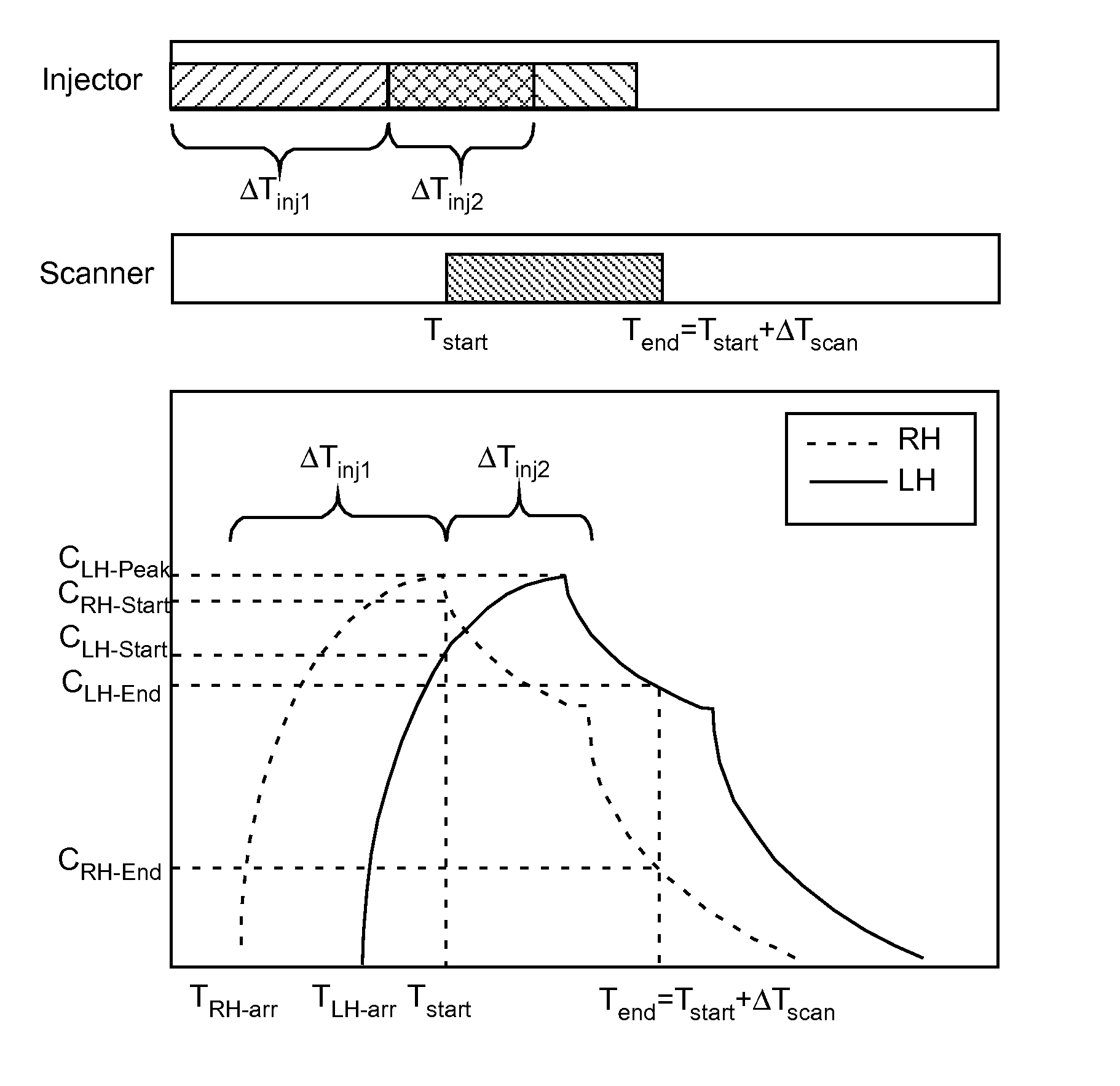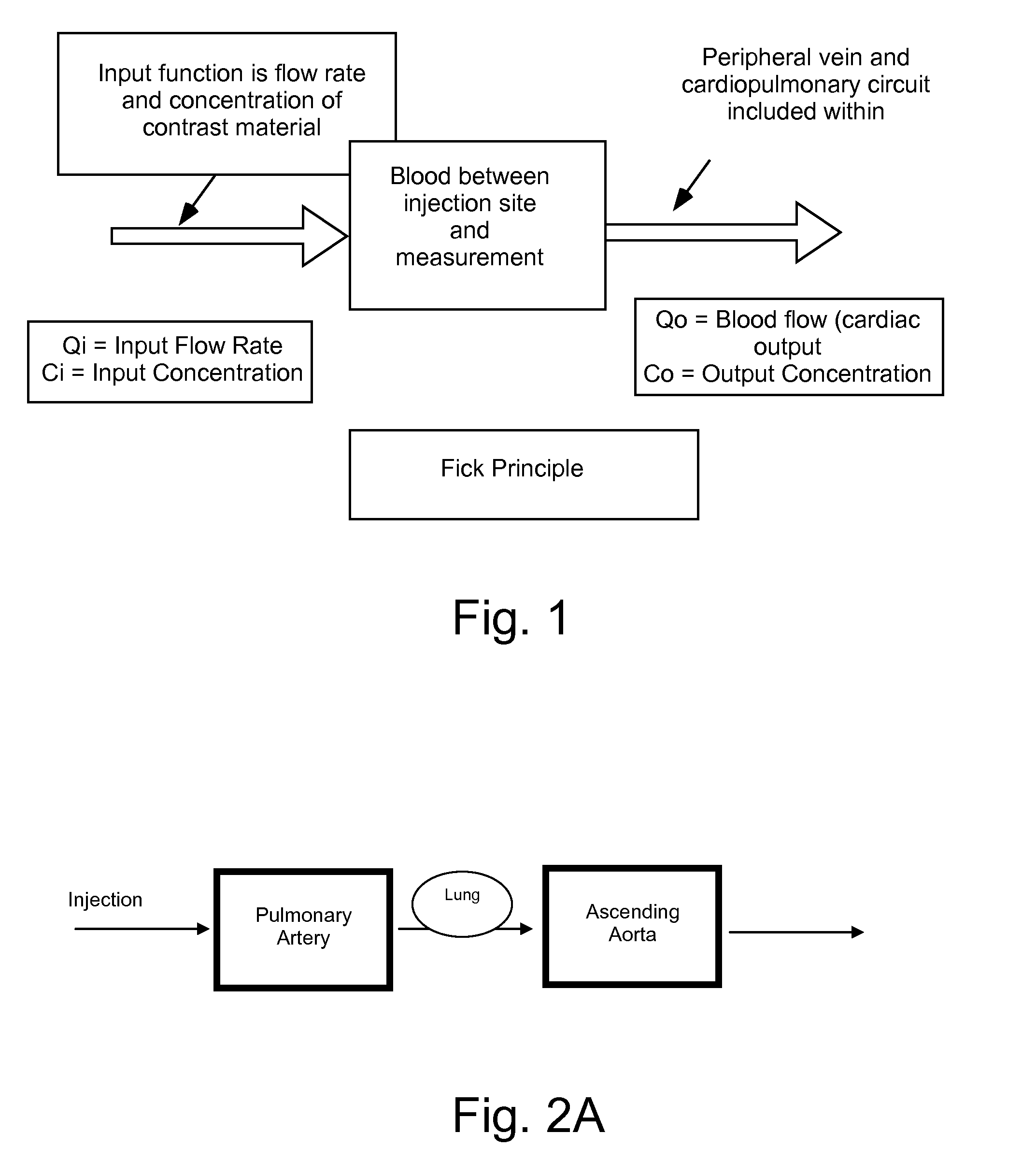Methods for determination of parameters for a procedure, for estimation of cardiopulmonary function and for fluid delivery
a technology of parameters and procedures, applied in the field of devices, systems and methods for determining parameters for procedures, for estimating cardiopulmonary function and fluid delivery, can solve the problems of non-uniform enhancement curve, different results in image contrast and quality, and injection profiles computed by inverse solution of pk model not readily realizable by most ct power injectors without major modification
- Summary
- Abstract
- Description
- Claims
- Application Information
AI Technical Summary
Benefits of technology
Problems solved by technology
Method used
Image
Examples
Embodiment Construction
[0083]In the present invention, variables in a model that is predictive of temporal changes in concentration in a region or regions of interest within a patient are determined or estimated using data from at least one concentration profile for a pharmaceutical (that is, concentration as a function of time) in at least one region of interest. Depending upon the number of variables present within the model, a number of discrete data points are taken from one or more contrast concentration profiles (that are, for example, provided by time enhancement curves generated using an imaging system) to provide an estimation of the values of such variables. In a number of models, such variables are related to cardiopulmonary function (that is, cardiac, pulmonary and vascular function / dynamics). For example, in a representative embodiment of a model used in the present invention, two variables, cardiac output (QCO) and blood volume (VB), are unknown. Two discrete data points (that is, two concen...
PUM
 Login to View More
Login to View More Abstract
Description
Claims
Application Information
 Login to View More
Login to View More - R&D
- Intellectual Property
- Life Sciences
- Materials
- Tech Scout
- Unparalleled Data Quality
- Higher Quality Content
- 60% Fewer Hallucinations
Browse by: Latest US Patents, China's latest patents, Technical Efficacy Thesaurus, Application Domain, Technology Topic, Popular Technical Reports.
© 2025 PatSnap. All rights reserved.Legal|Privacy policy|Modern Slavery Act Transparency Statement|Sitemap|About US| Contact US: help@patsnap.com



